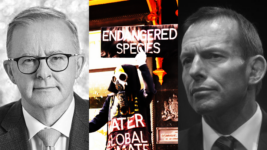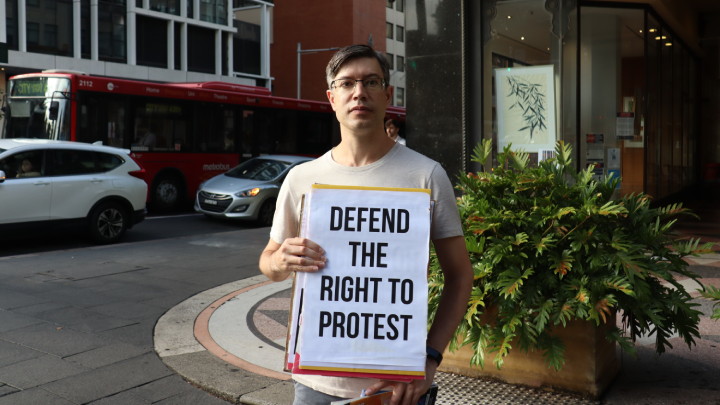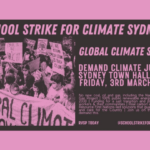Seen to Be Taking Action: Sydney Climate Coalition’s James Supple on the Safeguard Mechanism

As soon as the Albanese government took over in May 2022, international media commentators began referring to the new administration as forward-thinking on the issue of climate, in stark contrast to those who’d been voted out.
Indeed, under then prime minister Scott Morrison, our nation became one of the globe’s chief climate culprits, standing alongside the likes of Trump’s America and Bolsonaro’s Brazil.
For locals, however, the understanding was different. Whilst the fall of the Coalition paved the way for change, these hopes weren’t simply invested in Labor forging the needed reform, rather most were pinned to the influence of the rising number of Greens and teal independents in parliament.
But so far, what we’ve seen is inadequate policies placed on the table, and when progressives call them out, instead of engaging in debate, Labor is charging those demanding greater change with stalling on progress, leaving little choice but to vote in favour to avoid media fallout.
The Coalition’s seconds
Last year Albanese raised the bar on the nation’s emissions targets to a 43 percent reduction on 2005 levels, far higher than the Coalition’s 26 to 28 percent drop. However, this was also way below the more adequate 75 percent reduction target that the Greens were pressing.
Now it seems that for its next significant climate reform, the government is going to do the same: improve slightly on what the Liberal Nationals were offering and nothing more.
And this time, Labor is simply taking an Abbott era policy and raising the bar on that, slightly.
The Safeguard Mechanism is a scheme set up by the Coalition that serves to measure the greenhouse gas emissions of the largest emitters and it’s supposed to guide these operations in limiting emissions below a baseline, allowing them to purchase carbon credits to offset any excesses.
However, successive Coalition governments have not pressed these largest emitters to reduce any of their greenhouse gas outputs.
And when Albanese’s version of the Safeguard Mechanism is placed on the operating table, what becomes apparent is that this government, just like that of Abbott, has drafted a plan for the largest fossil fuel emitters to continue with business as usual, with room for more such projects to come.
Safeguarding the industry
Parliament is about to vote upon Labor’s Safeguard Mechanism (Crediting) Amendment Bill 2022, which serves to reform the Safeguard Mechanism by creating a new type of carbon credit: safeguard mechanism credits.
The scheme will also involve new baseline emissions targets for each emitter. These will be reduced annually, and those operations that produce emissions below their baselines will accrue new credits, which can then be sold to other fossil fuel operations that have gone over their baselines.
And as Sydney Climate Coalition spokesperson James Supple explains, this system allows large corporations that produce excessive amounts of emissions to simply buy their way out of this at a pittance of their profits.
Sydney Criminal Lawyers spoke to Supple about the inadequacy of the current government’s climate policies, the fact that it’s then demonising the Greens for not praising them, and how it’s in the hands of grassroots people to get out on the streets and demand the change needed.

The second reading debate on the Safeguard Mechanism Reforms (Crediting) Amendment Bill 2022 took place last week. Albanese wants to pass it before the end of March.
Despite the draft legislation being released last October and the bill being tabled in late November, a lot of the public are still unaware of the policy.
James, for those who haven’t heard of the Safeguard Mechanism, what does the Albanese government’s version entail?
This is one of the most important climate policies of the Albanese government because it’s designed to address about a third of Australia’s emissions.
Those are emissions from industrial sectors, so things like manufacturing, and it also includes fossil fuel operations, in terms of coal mines, gas extraction and natural gas processing.
So, there are 215 facilities covered and all of those emit around 100,000 tonnes of carbon dioxide a year.
These facilities will have a target set, requiring them to reduce emissions every year and play a part relative to their accrued emissions credits, in terms of allowing Australia to meet its reduction target that has been set by the Albanese government.
The government says its policy will ensure that the largest carbon emitters will have caps on the emissions they produce, and these will be reduced annually.
But a lot of people are critical that the system won’t work to abate the climate crisis. In your understanding, why is this system problematic?
The biggest problem is that the policy will allow companies to use unlimited offsets, so that companies can actually buy their way out instead of reducing their emissions.
What that means is emissions could significantly increase. Buying their way out is a problem because coal and gas companies can then meet their obligations under the scheme with loose change from their operations.
One analysis showed that Woodside, which is a massive gas miner, would only have to pay between 2.6 and 4.4 million dollars a year in 2025 to comply, and that’s a fraction of 1 percent of the company’s current annual profits.
There is also a problem if you look at the offset credits that they have to use. There has been enormous criticism and there has been lots of research and analysis done that shows many of the offset credits are dodgy and don’t deliver emissions reductions.
Academic Andrew Macintosh has done several reports critical of the federal government’s offset scheme. He’s criticised the way those offsets are accredited. He describes them as fraudulent and not really reducing emissions.
So, this is the biggest problem with the scheme. And a problem with that is this is going to allow a massive expansion in emissions and an expansion of fossil fuel projects, coal and gas mining, because new mines will be able to open, increase pollution and then they can simply buy their way out through purchasing some dodgy asset credits.
Because it covers coal and gas fossil fuel developments, the scheme is designed to allow the enormous expansion that we know is already underway.
It’s telling that the Albanese government is not prepared to even entertain a ban or moratorium on new coal and gas projects, because their Safeguard Mechanism is set up to allow a massive expansion of fossil fuel.
What would be an example of a dodgy carbon offset credit?
A lot of the offset credits are tree planting and land regeneration. There is a lot of criticism over offsets that are based on scrubland.
Companies have claimed credits for regeneration to grow more vegetables.
But studies, including some by Andrew Macintosh, have set out that some projects haven’t involved the increase of vegetation at all, so there is no actual carbon storage involved.
Many commentators have raised the point that the Safeguard Mechanism is a policy that was first enacted by the Abbott government in 2016.
Can you talk about the history of the mechanism and how it has been applied up until now?
The Safeguard Mechanism was created under the Coalition by Tony Abbott. It began operation in July 2016.
The Abbott government set it up without any intention of actual enforcement or seriously trying to reduce emissions from these companies.
So, since 2016, emissions covered by the scheme have grown by 7 percent, instead of it having delivered any actual reduction.
The Abbott government wasn’t interested in reducing emissions. And as part of Labor’s unwillingness to differentiate from the Coalition and adopting a small target policy at the election, it decided to simply adopt the Coalition’s policy.
Labor said it was going to reform it as a way of trying to minimise the differences between Labor and the Coalition.
The result is a scheme that was designed in the interests of business, a very business-friendly scheme, which had these features in terms of offsets built into it since the beginning.
Now this has been adopted by Labor, and despite their reforms, it isn’t going to deliver any real climate action.
So, in 2016, Abbott set up this scheme to look like it was doing something, when it wasn’t and now Albanese is using this policy to do the same.
That’s true. The Albanese government is concerned about having the appearance of having action on climate change.
At the election, it wanted to make a point about being in favour of climate action, but it is much more interested in the illusion of action, rather than confronting and challenging the fossil fuel companies and the big polluting corporations that are responsible for Australia’s carbon pollution.
And lastly, James, there’s limited time to take action on the climate crisis. But in this country, such action was put on hold due to years of Coalition governance, and it now appears that Labor is going to halt its progress in a manner that presents a public front that says otherwise.
So, as runaway climate change is only escalating and, despite long-term public outcry, successive governments are only continuing to prioritise the wants of the fossil fuel industry, how do you consider adequate climate action is going to come about?
We need to build a much stronger and more powerful climate movement on the streets and in the workplaces. There has been a start to that in terms of the School Strike 4 Climate.
Sydney and some other cities just had their first climate strikes since the election. There were around 1,000 students on the streets in Sydney demanding climate action and demanding that Labor go further.
We need a lot more of that kind of action. We need to build up the climate strikes to get back to the thousands that we saw on the streets during the Morrison government.
That means the climate movement needs to get out there and explain to people what is wrong with Labor’s approach.
Labor talks about climate action but isn’t serious, and the only way we’re going to force that action is to build a much stronger grassroots movement that fights the Labor government and demands serious change.
We need much bigger protests on the streets. We need to pull in the trade unions, so we have the power that organised workers have alongside the protests by school and university students and the community to build pressure on Labor to get serious about climate and deliver the action we need.







